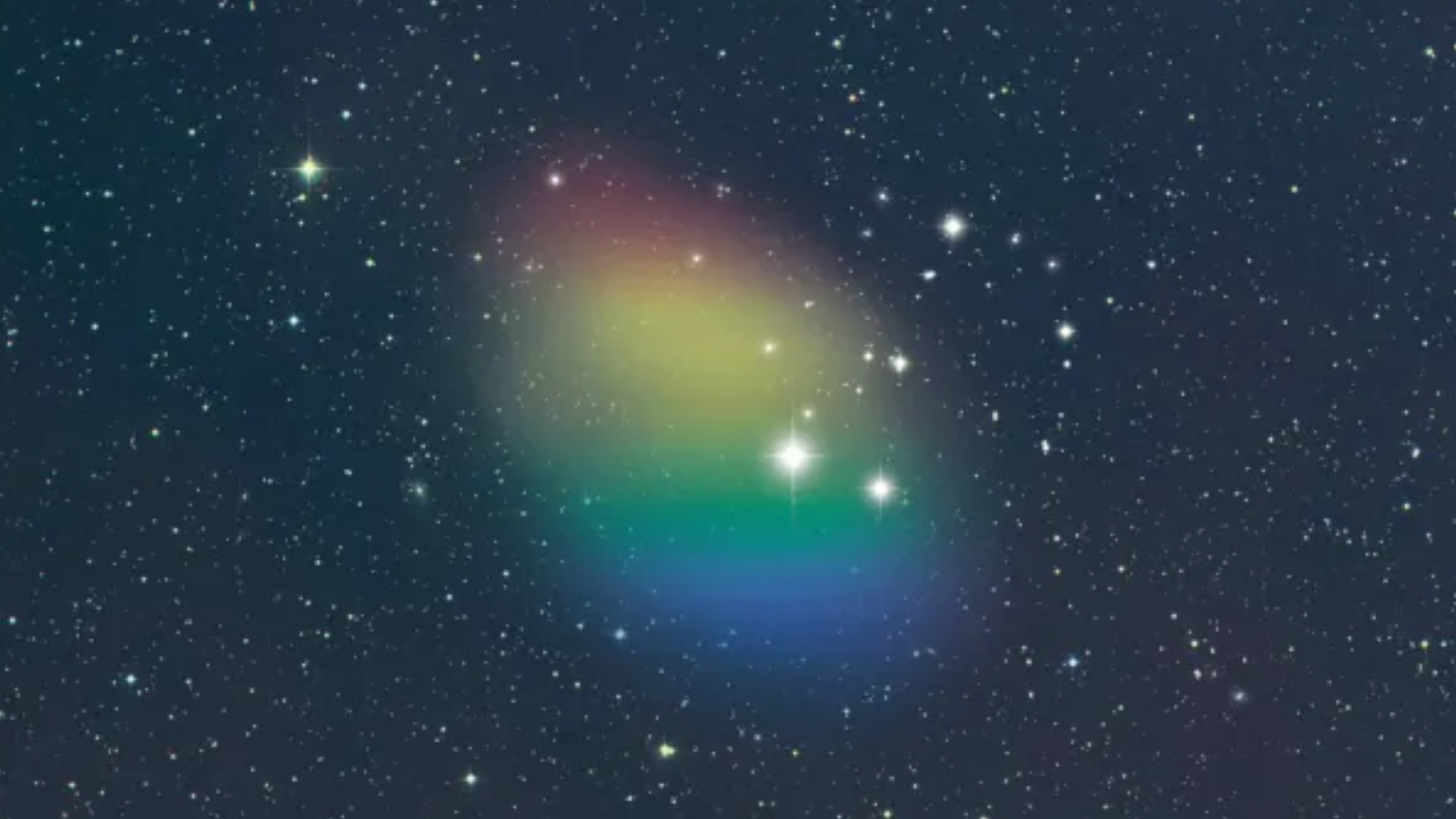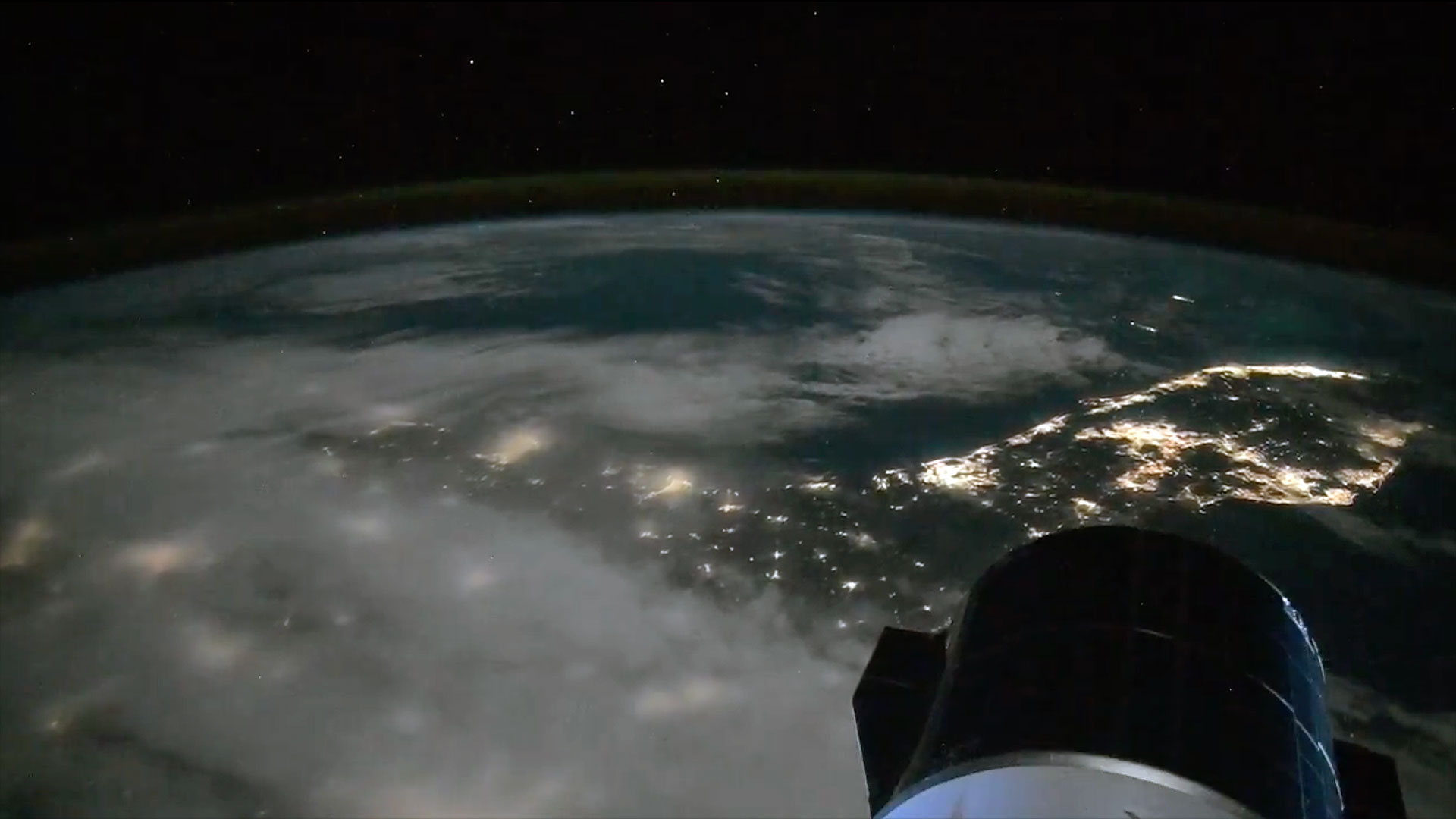Astronomers accidentally discover 'dark' primordial galaxy with no visible stars

Astronomers have accidentally discovered a dark galaxy filled with primordial gas untouched that appears to have no visible stars.
The researchers behind the discovery say this galaxy, designated J0613+52, could be "the faintest galaxy found to date." Interestingly, scientists using the Green Bank Telescope (GBT) discovered the "dark" galaxy through a complete error.
"The GBT was accidentally pointed to the wrong coordinates and found this object. It's a galaxy made only out of gas — it has no visible stars," Green Bank Observatory senior scientist Karen O'Neil said in a statement. "Stars could be there. We just can't see them."
Remarkably, this galaxy full of primordial gas isn't billions of light-years away and thus seen as it was when the 13.8 billion-year-old universe was in its infancy; instead, the dark galaxy designated J0613+52 is just around 270 million light-years away.
Related: The mystery of vast 'cosmic ORCs' — odd radio circles that encompass entire galaxies — may be solved
Low Surface Brightness galaxies
J0613+52 was discovered by astronomers as they surveyed hydrogen gas in several so-called Low Surface Brightness (LSB) galaxies using several major radio telescopes around the globe, including the Green Bank Telescope (GBT), the world's largest fully steerable radio telescope located in Green Bank, West Virginia, and the Nançay Radio Telescope at the Paris Observatory.
LSBs tend to have a tiny population of stars spread across their volume, and as a result, they emit much less light per unit of area than standard galaxies like the Milky Way or Andromeda. LSBs are often barely brighter than the background luminosity of the night sky, making them incredibly tough to spot.
Breaking space news, the latest updates on rocket launches, skywatching events and more!
For instance, the first LSB to be discovered was Malin 1, found in the 1980s, which is still one of the largest spiral galaxies ever seen at 5 times the width of the Milky Way. Despite its size, though, Malin 1 is just 1% as bright as our galaxy.
LSBs also seem to be evolving much more slowly than other galaxies, with many still experiencing early stages of star formation. Astronomers believe this is because of their low gas density, meaning that overdense clumps of gas can't coalesce to that eventually birth stars.
The aim of the survey that found J0613+52 was to determine the mass and gas content of these low-brightness or "ultra-diffuse" galaxies, the diluted nature of which causes issues for current theories of star formation and galactic evolution. Astronomers noticed a disparity in data between the GBT and the Nançay Radio Telescope that would lead to the discovery of a galaxy that is an LSB unlike any other in the LSB survey.
A unique dark galaxy
J0613+52 is an LSB like the other 350 galaxies in the survey, but it has some properties that really set it apart.
"What we do know is that it's an incredibly gas-rich galaxy. It's not demonstrating star formation like we'd expect, probably because its gas is too diffuse," O'Neil said. "At the same time, it's too far from other galaxies for them to help trigger star formation through any encounters."
She added that this means that J0613+52 appears to be both "undisturbed and underdeveloped," hinting that what O'Neil and the team may have discovered accidentally in the shape of J0613+52 is the first nearby galaxy made up of primordial gas.
This means gas made up of mostly hydrogen and helium created shortly after the Big Bang, which has not been enriched when stars exploded and seeded it with heavy elements, or "metals." This is something astronomers would normally see further away and thus much further back in cosmic history.
Also remarkable about J0613+52 is the fact that it appears to be turning just like a normal spiral galaxy would
Ultimately, the discovery of J0613+52 has left its discoverers with more questions than answers. Primary among these: Are there any more LSBs like this out there or is this a unique galaxy?
The team suggests that deep imaging in multiple wavelengths of light could reveal more of these ultra-dark LSBs, though there is the possibility that the low density of gas makes these galaxies difficult or even impossible to observe at wavelengths other than radio waves.
"A full sky survey by an extremely sensitive instrument like the Green Bank Telescope could uncover more of these objects," concluded O'Neil, who presented the team's findings at the 243rd meeting of the American Astronomical Society in New Orleans, Louisiana.

Robert Lea is a science journalist in the U.K. whose articles have been published in Physics World, New Scientist, Astronomy Magazine, All About Space, Newsweek and ZME Science. He also writes about science communication for Elsevier and the European Journal of Physics. Rob holds a bachelor of science degree in physics and astronomy from the U.K.’s Open University. Follow him on Twitter @sciencef1rst.
